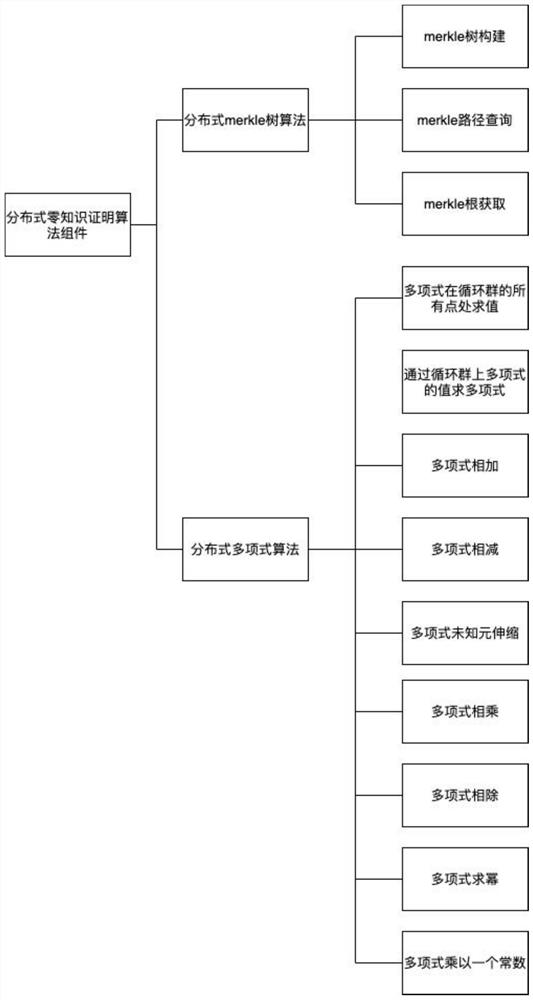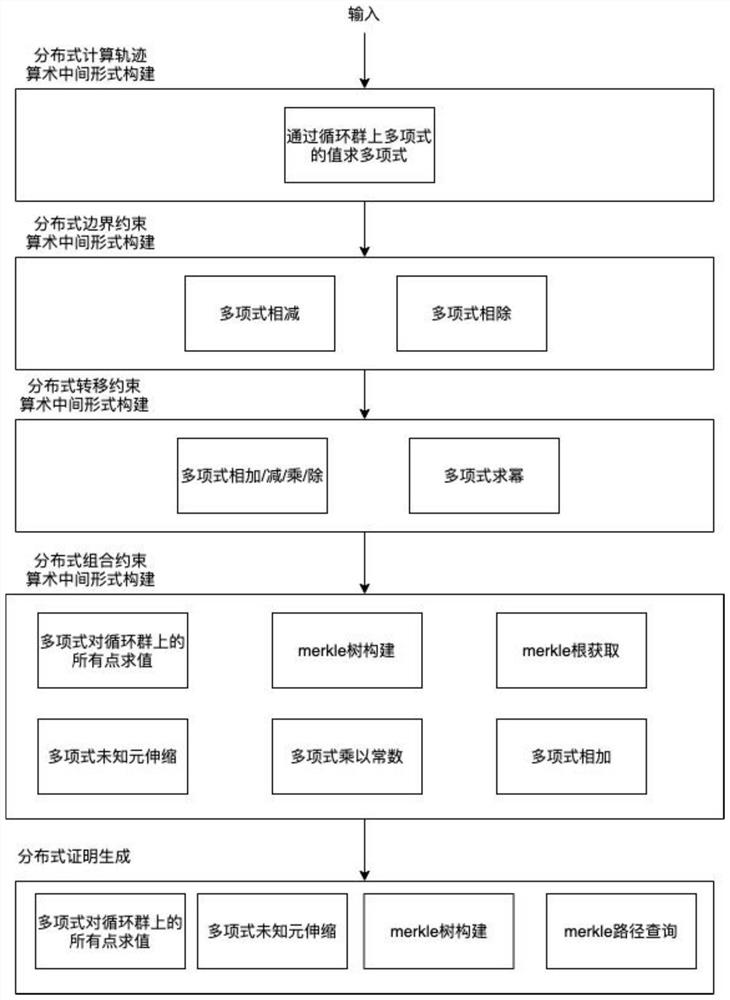Efficient distributed zero-knowledge proof method based on Spark
A zero-knowledge proof and distributed technology, applied in the information field, can solve problems such as inability to handle large-scale calculations, limited single-machine memory, and long time, and achieve the effects of high degree of distribution, small memory dependence, and improved efficiency
- Summary
- Abstract
- Description
- Claims
- Application Information
AI Technical Summary
Problems solved by technology
Method used
Image
Examples
Embodiment Construction
[0023] refer to figure 2 As shown, the present invention includes two types of distributed algorithm components: distributed merkle tree algorithm and distributed polynomial algorithm. SparkRDD key-value pairs are used to represent merkle trees, polynomials, and the evaluation results of polynomials at all points on a finite field. Merkle trees are represented as RDD([(node index, node value)]), polynomial f(X) The representation is RDD([(the exponent of X, the coefficient of this term)]), and the representation of the polynomial evaluation result is RDD([(the value of the X coordinate, the value of the polynomial at this point)]). Next, the specific implementation of various distributed algorithms is introduced.
[0024] Algorithm 1. The specific implementation of the merkle tree construction in the distributed merkle tree algorithm is as follows:
[0025] a) The input is an RDD composed of leaf nodes;
[0026] b) Traverse the RDD and convert the original (key, value) ...
PUM
 Login to View More
Login to View More Abstract
Description
Claims
Application Information
 Login to View More
Login to View More - R&D
- Intellectual Property
- Life Sciences
- Materials
- Tech Scout
- Unparalleled Data Quality
- Higher Quality Content
- 60% Fewer Hallucinations
Browse by: Latest US Patents, China's latest patents, Technical Efficacy Thesaurus, Application Domain, Technology Topic, Popular Technical Reports.
© 2025 PatSnap. All rights reserved.Legal|Privacy policy|Modern Slavery Act Transparency Statement|Sitemap|About US| Contact US: help@patsnap.com



